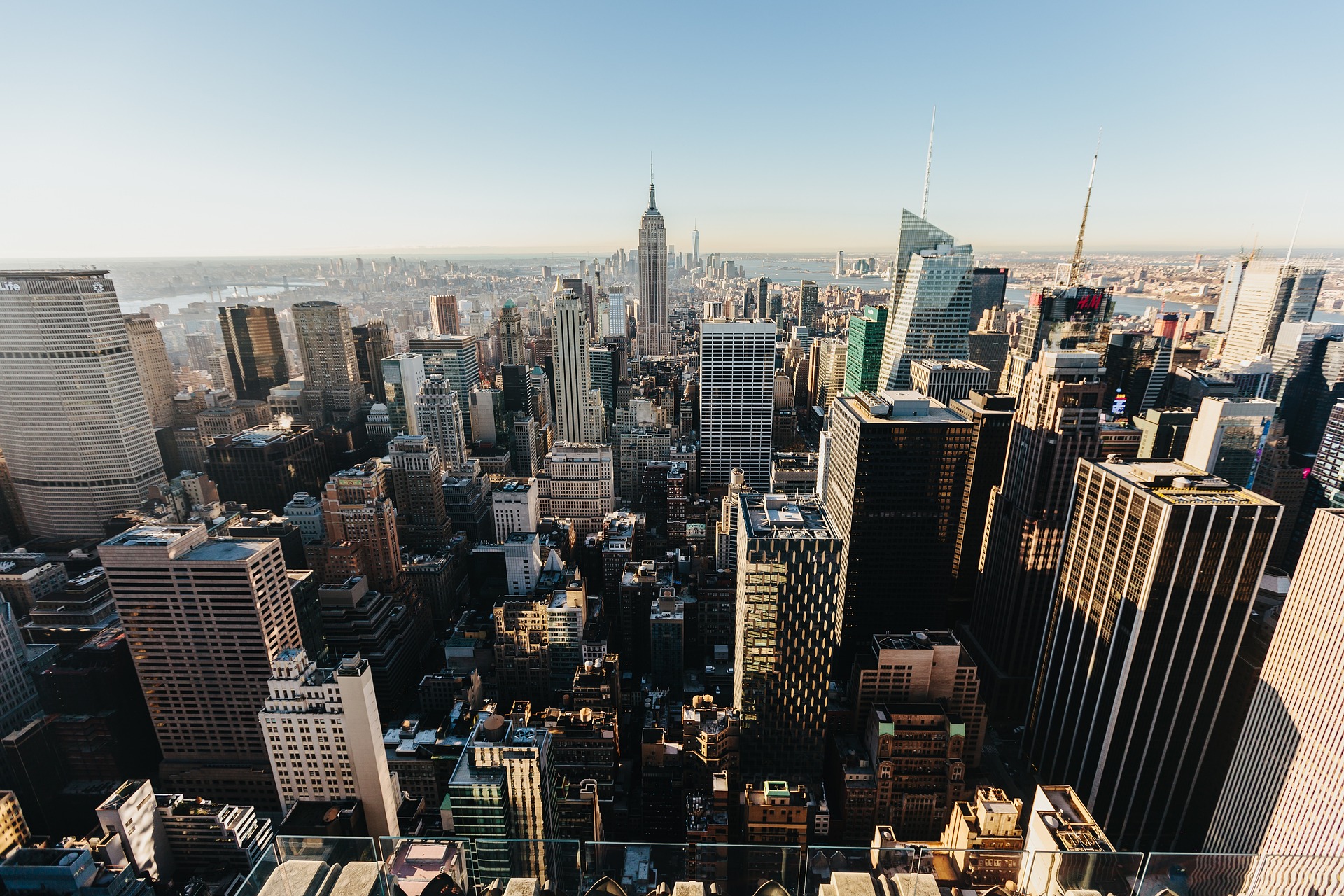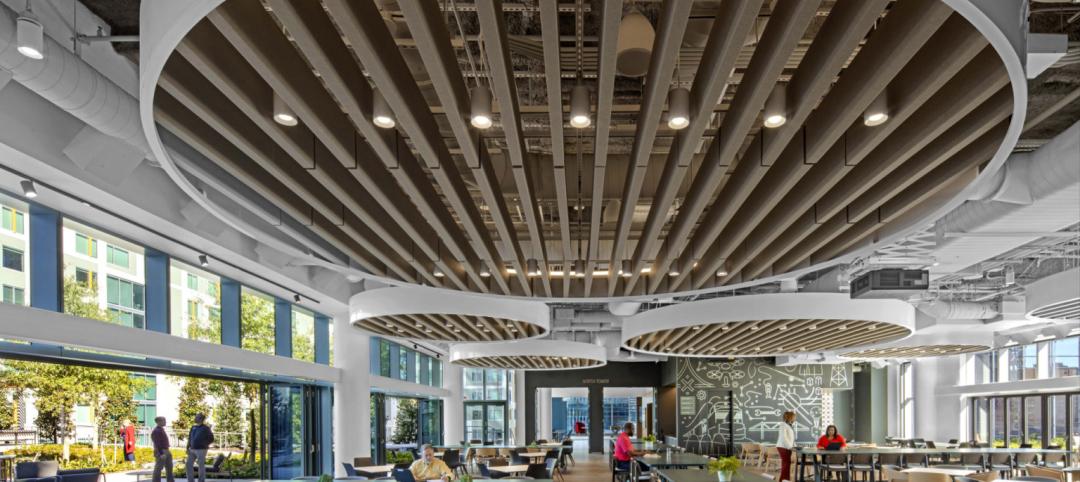The Inflation Reduction Act (IRA) of 2022 includes $370 billion in funding to reduce climate change. On August 16—the day the act was signed into law—HOK hosted a LinkedIn Live conversation on the legislation’s impact on the building sector. The panel discussion with Smart Surfaces Coalition’s Greg Kats and HOK’s Anica Landreneau and Stephanie Miller (moderator) revealed multiple ways the IRA will benefit the built environment, including:
1. By modernizing codes and improving both new and existing buildings.
Anica Landreneau, director of HOK’s sustainable design practice, pointed out that the law includes funding to update local energy codes and incentives to make it less expensive for developers to incorporate sustainable materials into new projects. Existing home and building owners will also benefit.
“The last time we saw this level of investment in code adoption was in the 2009 stimulus bill that brought most of the country up to the 2009 energy codes,” said Landreneau. “That was a transformative shift, and here we now have over $1 billion in energy code investment. We’ll see a huge lift for new construction. We’re also seeing this great package of incentives for doing energy audits, weatherization, swapping out older equipment and making improvements to the building envelope.”
2. By eliminating any remaining green building “excuses.”
Greg Kats, founder and CEO of Smart Surfaces Coalition, noted that the IRA comes at a critical juncture in history, when much of the world is experiencing record-setting temperatures, resulting in loss of life and livelihood.
“The larger picture is that the rationale for waiting has largely gone away. The IRA provides the funding to enable this transition from sitting on the fence or doing relatively little [about sustainability] to really diving in and going to zero net carbon,” said Kats. “I think people will look back at this as a milestone summer because of the combination of the heat we’ve experienced and the significance of this bill.”
3. By creating a federal proving ground for green building technology.
Landreneau pointed out that the IRA includes funding for the federal government to demonstrate that the low-carbon technologies and materials work.
“Many years ago, HOK worked on a deep green retrofit of the Byron Rogers Federal Building in Denver. At that time, LED lighting was nascent. People were using it in their building lobbies or other places where it was hard to change light bulbs, but they weren’t sure that they could do it at scale,” said Landreneau. “The green proving ground that the General Services Administration launched with that project was transformative in proving that you could take a huge commercial office building and use LED lighting technology and it would work. Once you do it on a project of that scale, it de-risks it for the rest of the market. They’re not the first to stick their head out. So, the idea that the IRA has all this seed funding for companies to both innovate but also to do installations that demonstrate they are effective and perform is huge.”
4. By jump-starting private investment and development in green technologies.
According to Kats, the law will also ramp up the private use and development of green technologies. “Ground source heat pumps are a ‘no brainer’ that people can begin installing today. They cut your heating and cooling bill by about half,” he said.
Kats also mentioned emerging technologies that will likely benefit from the bill, such as technology developed by Blue Planet and other startups that captures carbon emissions from factories and utility plants and converts that carbon into aggregate used for concrete and other building materials.
5. By improving conditions in low-income neighborhoods, including the built environment.
Additional funding in the IRA has the potential to transform low-income communities in two important ways, said Kats. The first is by sponsoring apprentice programs to train people to work in green technology and related fields. “The apprentice part of this is going to mean a lot of people who may not have jobs or want to change jobs can get into a better career path. In terms of social transformation, this inclusionary, broad-based employment is important.”
Second, funding from the act can improve living conditions and health in inner cities by making them more resilient to heat and flooding. “If you think about low-income communities in cities, you’re looking at about 50 million people who are mostly minority. And because of the surfaces in these communities, they are about 12 to 15 degrees hotter in the summer than wealthy communities,” he said. “That means their energy bills are much higher. Air conditioning can’t keep up, which results in heat deaths.
As people deploy this bill, it’s important to think not about slices, but transitions. Those transitions need to incorporate all these different elements: solar, energy efficiency, reflective roofs, trees, bioswales. How do you manage sun and rain, these two gifts that God gives us? Right now, we turn them into heat or flooding, and that’s just dumb policy. … That is a long-standing and structural environmental injustice problem. It’s a direct result of cities not investing in surfaces, not investing in solar, not investing in trees, not investing in efficiency in low-income areas. This bill can transform that.”
6. By promoting “Made in America.”
Landreneau noted that the IRA is also looking to relocate green technology manufacturing to the United States.
“A lot of the tax incentives have compounding benefits if you buy American materials that are at least 55% made in the U.S.,” said Landreneau. “There is another compounding benefit if the companies that you’re buying from meet certain wage thresholds. It’s important to note that these incentives are both supporting American-made products and materials as well as paying people a livable wage.”
7. By reducing energy bills.
The nonprofit research institution Resources for the Future estimates that provisions in the LRA will cut retail costs of electricity by 5.2% to 6.7% over the next decade.
“We’ve always known that energy efficiency is very cost effective,” said Kats. “This bill’s combination of strengthening jobs and training will help us get ahead on innovation–so we’re the ones exporting to the world instead of importing—while also cutting people’s energy bills. That’s a fantastic combination. I don’t see how anybody who is a businessperson or cares about quality of life in our cities can oppose it.”
More from Author
HOK | Oct 18, 2024
7 design lessons for future-proofing academic medical centers
HOK’s Paul Strohm and Scott Rawlings and Indiana University Health’s Jim Mladucky share strategies for planning and designing academic medical centers that remain impactful for generations to come.
HOK | Aug 8, 2024
6 design trends for the legal workplace
Law firms differ from many professional organizations in their need for private offices to meet confidentiality with clients and write and review legal documents in quiet, focused environments
HOK | Jun 6, 2024
HOK presents neurodiversity research and design guidelines at SXSW 2024
Workplace experts share insights on designing inclusive spaces that cater to diverse sensory processing needs.
HOK | Apr 2, 2024
How university rec centers are evolving to support wellbeing
In a LinkedIn Live, Recreation & Wellbeing’s Sadat Khan and Abby Diehl joined HOK architect Emily Ostertag to discuss the growing trend to design and program rec centers to support mental wellbeing and holistic health.
HOK | Jan 25, 2024
40 Under 40 Class of 2023 winner Kimberly Dowdell inaugurated as AIA 2024 President
The American Institute of Architects (AIA) has announced the inauguration of Kimberly Dowdell, AIA, NOMAC, NCARB, LEED AP BD+C, Principal and Director of Strategic Relationships at HOK and BD+C 40 Under 40 superstar, as its 100th president.
HOK | Jul 13, 2023
Deep green retrofits: Updating old buildings to new sustainability standards
HOK’s David Weatherhead and Atenor’s Eoin Conroy discuss the challenges and opportunities of refurbishing old buildings to meet modern-day sustainability standards.
HOK | Jun 5, 2023
Office design in the era of Gen Z, AI, and the metaverse
HOK workplace and interior design experts Kay Sargent and Tom Polucci share how the hybrid office is evolving in the era of artificial intelligence, Gen Z, and the metaverse.
HOK | May 5, 2023
9 workplace design trends for 2023
HOK Director of WorkPlace Kay Sargent and Director of Interiors Tom Polucci discuss the trends shaping office design in 2023.
HOK | Apr 4, 2023
6 examples of modern college training facilities
HOK discusses the future of college training facilities, with six design takeaways derived from a discussion between Dan Radakovich, Director of Athletics at the University of Miami, and Trevor Bechtold, Director, HOK’s Sports + Recreation + Entertainment practice.
HOK | Feb 23, 2023
Using data to design the sports venue of the future
Former video game developer Abe Stein and HOK's Bill Johnson discuss how to use data to design stadiums and arenas that keep fans engaged and eager to return.
















